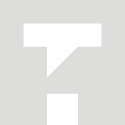So what now in 2011? What happened to the wild fonts and layouts? Is balance back? An exhibition on Crouwel and his work has just commenced at the Stedelijk Museum, Amsterdam.
Showing 30 years history of finest Dutch typography, Crouwel suggested a compromise between classical training and experimentation (first seconds are in German movie in .mov-Format).
Wim Crouwel: After the Alphabet 1967 – 1996
Pointing to the pioneers of Europe’s Industrial Culture and with over 30 years experience in type design, Crouwel’s insight and knowledge of the type industry proved to make an entertaining final presentation of TYPO 1996. Taking us through a retrospective of his work he explained his early interest in grids, architecture and Bauhaus design. As with many peers of his time, his primary concern was for legibility, whilst still pushing the boundaries of type design. Crouwel noted that in recent years ‘readability’ has got lost. “The production of type faces and print is ever growing, each copying/mimicking the former the result is like eating airline food in the rain”.

Wim Crouwel
He continued to explain that nowadays it seems we have broken away from the grid as a structure. Text is not to be read, it is to be experienced.The image of many different pages seems to make the whole, (example; Ray Gun). Although admitting to being impressed with what he sees, he felt a balance is needed. Blaming art college curriculums for the drop in legality within design, he concluded that a compromise was need between experimentation and classical training.
(summerized by Lewis Berman, documentation Typo 1996)



















